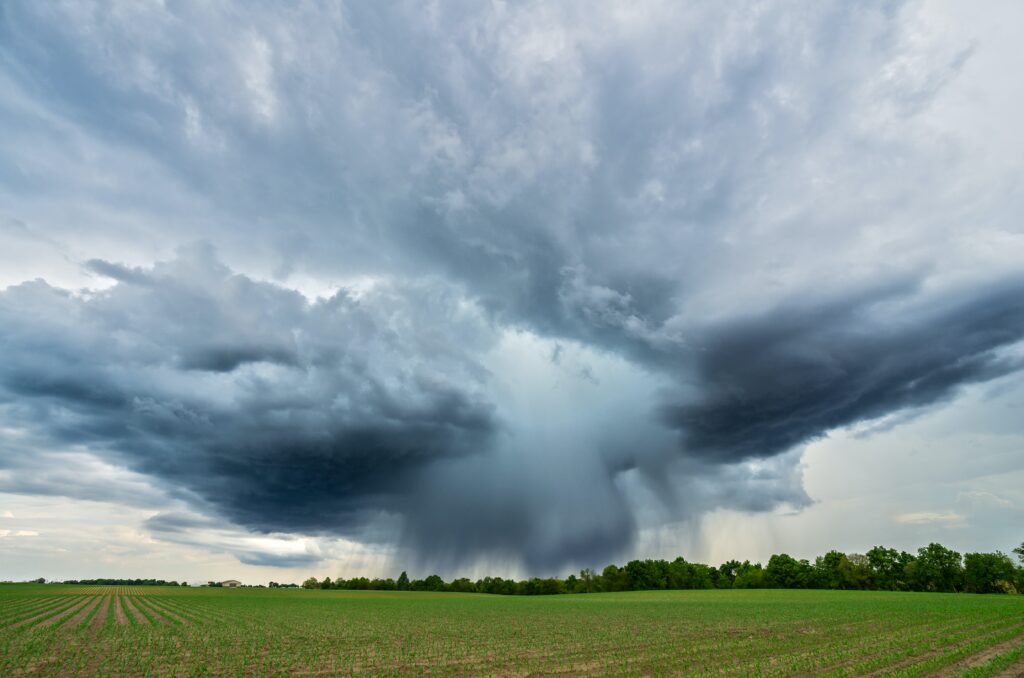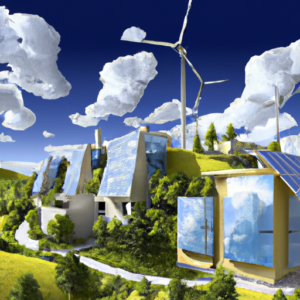Climate change is a pressing environmental issue that requires immediate attention. In order to combat this global problem, it is crucial to understand the role that trees play in fighting climate change. So, What is the role of trees in combating climate change? Trees serve as powerful allies in this battle, acting as natural carbon sinks and reducing greenhouse gas emissions. By absorbing carbon dioxide from the atmosphere, trees help mitigate the impacts of climate change and provide numerous environmental benefits.
1. Trees as Carbon Sinks
1.1. Trees Absorb CO2
Trees play a vital role in combating climate change by absorbing carbon dioxide (CO2) from the atmosphere through a process called photosynthesis. During photosynthesis, trees take in CO2 and convert it into oxygen (O2) while storing the carbon in their trunks, branches, leaves, and roots. This process helps to reduce the levels of greenhouse gases in the atmosphere, mitigating the effects of climate change.
1.2. The Importance of Carbon Sequestration
Carbon sequestration refers to the process of capturing and storing carbon dioxide to prevent it from being released into the atmosphere. Trees are excellent carbon sequestration agents, as they can store large amounts of carbon throughout their lifetimes. By absorbing CO2, trees act as natural carbon sinks, helping to reduce the concentration of greenhouse gases in the atmosphere and mitigate the impacts of climate change.
1.3. Forests as Natural Carbon Sinks
Forests are particularly effective at sequestering carbon because of their vast size and density. Trees in forests can absorb significant amounts of CO2 and store carbon in their biomass, including the leaves, stems, and roots. Mature forests, in particular, have the highest carbon storage capacity, making them crucial in the fight against climate change. Preserving and restoring forests is essential to maintain their role as natural carbon sinks.
1.4. Tree Planting to Offset Emissions
Tree planting is an effective strategy to offset greenhouse gas emissions. By planting trees in areas where there are few or no trees, we can enhance carbon sequestration and create new carbon sinks. Through initiatives like reforestation and afforestation, individuals, communities, and organizations can contribute to mitigating climate change. Tree planting not only helps to remove CO2 from the atmosphere but also provides numerous co-benefits, such as improved air quality and habitat for wildlife.
2. Tree Canopy and Temperature Regulation
2.1. Trees and Urban Heat Islands
Urban areas often experience higher temperatures than surrounding rural areas, giving rise to urban heat islands. Trees play a crucial role in mitigating the urban heat island effect by providing shade and cooling the surrounding environment. The shade from tree canopies can significantly reduce ambient temperatures in urban areas, creating more comfortable and livable spaces for residents.
2.2. Shading and Cooling Effects
The shading provided by trees can reduce the temperature in their immediate vicinity by up to 10 degrees Fahrenheit. This cooling effect is especially beneficial during hot summer months when energy demands for air conditioning soar. By strategically planting trees in urban areas, we can reduce the need for excessive use of air conditioning, thereby decreasing energy consumption and associated greenhouse gas emissions.
2.3. Reducing Energy Demands
Trees can help reduce energy demands by providing shade to buildings, which reduces the amount of heat transferred into structures. By creating natural shade, trees can reduce the need for artificial cooling systems and decrease energy consumption, resulting in lower carbon emissions. The presence of trees can significantly improve energy efficiency in both residential and commercial buildings.
2.4. Mitigating Climate-Related Health Risks
Extreme heat events, exacerbated by climate change, pose significant health risks. Trees play a vital role in mitigating these risks by providing cooling effects and shading. By reducing ambient temperatures, trees can help prevent heat-related illnesses, such as heatstroke and dehydration. The presence of trees in urban areas can also improve air quality, reducing the risk of respiratory problems associated with poor air pollution.

Check Out Our Top Eco Friendly Product Picks On Amazon Here
3. Trees and Water Cycle
3.1. Importance of Tree Canopy in Water Regulation
Trees play a crucial role in regulating the water cycle by preventing excessive evaporation from the ground and reducing stormwater runoff. The canopy of trees intercepts rainfall, allowing water to be absorbed by their leaves and branches and gradually released into the atmosphere through a process known as transpiration. This process helps to regulate local precipitation patterns and maintain water availability, particularly in areas prone to drought.
3.2. Reduction of Stormwater Runoff
The extensive root systems of trees help to improve soil infiltration, reducing the amount of stormwater runoff. By absorbing rainfall and slowing down the flow of water, trees help to prevent flooding and erosion. This is especially important in urban areas, where impervious surfaces like concrete and asphalt can contribute to rapid stormwater runoff. The presence of trees in urban landscapes can help mitigate the impacts of heavy rainfall events.
3.3. Enhancing Groundwater Recharge
Trees play a vital role in enhancing groundwater recharge, which is the process by which water replenishes underground aquifers. The roots of trees extend deep into the soil, allowing them to access water sources that may be beyond the reach of other plants. By absorbing and storing water in their roots, trees contribute to the replenishment of groundwater, ensuring a sustainable water supply for ecosystems and human communities.
3.4. Preventing Soil Erosion and Nutrient Runoff
The extensive root systems of trees help to stabilize soil, preventing erosion and the loss of valuable topsoil. By holding the soil together, trees reduce the risk of landslides and maintain the integrity of ecosystems. Additionally, trees act as natural filters, trapping sediments and nutrients, such as nitrogen and phosphorus, that can contribute to water pollution. By preventing nutrient runoff, trees help to protect water quality and support healthy aquatic ecosystems.
4. Biodiversity and Ecosystem Services
4.1. Trees as Habitat for Wildlife
Trees provide essential habitats for a wide range of wildlife species, including birds, mammals, insects, and microorganisms. Forests, in particular, support high levels of biodiversity, providing a home for numerous plant and animal species. The diverse vegetation structure and resources offered by trees, such as food and shelter, create thriving ecosystems that support a web of interconnected organisms.
4.2. Supporting Biodiversity
The presence of diverse tree species in an ecosystem supports biodiversity by providing different niches and resources for various species. Different tree species attract different wildlife, contributing to the overall richness and variety of a given area. Forests with high levels of biodiversity are more resilient to disturbances and provide greater benefits to both wildlife and human communities.
4.3. Provision of Ecosystem Services
Trees provide numerous ecosystem services that are essential for human well-being. These services include carbon sequestration, air and water purification, soil fertility, climate regulation, and pollination. By maintaining healthy ecosystems and promoting the conservation of trees, we can ensure the continued provision of these essential services, which are vital for our survival and the sustainability of the planet.
4.4. Strengthening Ecological Resilience
Trees play a crucial role in strengthening ecological resilience by providing stability and resistance to disturbances. Forests act as natural buffers against the impacts of climate change, such as extreme weather events and habitat loss. By protecting and restoring forests, we can enhance the capacity of ecosystems to adapt and recover from environmental changes, ensuring the long-term survival of diverse plant and animal species.

5. Trees and Air Quality
5.1. Filtering Pollutants from the Air
Trees act as natural air filters, removing pollutants from the atmosphere and improving air quality. The leaves and bark of trees can capture airborne particles, such as dust, pollen, and smoke, thereby reducing their concentration in the air. This filtering effect helps to minimize the health risks associated with air pollution, such as respiratory diseases and allergies.
5.2. Absorption of Harmful Gases
In addition to filtering particulate matter, trees have the ability to absorb harmful gases, such as nitrogen dioxide (NO2), sulfur dioxide (SO2), and ozone (O3). These gases, emitted from sources like vehicles, power plants, and industrial activities, contribute to air pollution and climate change. By absorbing these gases, trees help to mitigate their negative impacts on human health and the environment.
5.3. Reduction of Airborne Particulate Matter
Airborne particulate matter, often referred to as PM2.5 and PM10, poses a significant threat to human health, especially in urban areas with high levels of pollution. Trees can help reduce the concentration of these fine particles by capturing them on their leaves and branches. This mechanism helps to improve air quality and reduce the risk of respiratory and cardiovascular diseases associated with exposure to particulate matter.
5.4. Improving Respiratory Health
The presence of trees in urban areas can have significant benefits for respiratory health. By reducing air pollution and filtering harmful particles and gases, trees contribute to cleaner air, promoting healthier lungs and reducing the risk of respiratory illnesses. The shading and cooling effects of trees also create more comfortable outdoor spaces for physical activities, encouraging an active and healthy lifestyle.
6. Trees and Soil Health
6.1. Nutrient Cycling and Soil Fertility
Trees play a vital role in nutrient cycling and soil fertility. Through their roots, trees absorb nutrients from the soil, including nitrogen, phosphorus, and potassium, which are essential for plant growth. When leaves, branches, and other organic matter from trees fall to the ground, they decompose, releasing these nutrients back into the soil. This natural cycle helps to replenish soil fertility and support the growth of other plants in the ecosystem.
6.2. Retention of Moisture and Prevention of Desertification
The presence of trees can help retain moisture in the soil, preventing excessive evaporation and desertification. Tree canopies provide shade, reducing the exposure of the ground to direct sunlight and minimizing water loss through evaporation. The roots of trees also help to stabilize soil, preventing erosion and the loss of moisture. By maintaining healthy soil moisture levels, trees support the growth of vegetation and contribute to ecosystem resilience.
6.3. Carbon Storage in Soils
In addition to storing carbon in their above-ground biomass, trees also contribute to carbon storage in soils. When organic matter from trees decomposes, carbon is incorporated into the soil, where it can be stored for long periods. Forests and other wooded areas, including agroforestry systems, play a crucial role in sequestering carbon in soils, making them valuable tools in climate change mitigation.
6.4. Enhancing Agricultural Productivity
Trees can have significant benefits for agricultural productivity. Agroforestry systems, which combine trees with crops or livestock, provide a range of environmental and economic benefits. Trees in agroforestry systems help to improve soil fertility, conserve water, provide shade and wind protection, enhance biodiversity, and increase yields. By integrating trees into agricultural landscapes, we can create sustainable and resilient food production systems.

7. Forests and Climate Regulation
7.1. Role of Forests in Stabilizing Climate
Forests play a critical role in regulating the Earth’s climate by acting as carbon sinks and influencing atmospheric conditions. The vast extent of forested areas helps to absorb and store significant amounts of carbon dioxide, helping to mitigate global warming. Forests also play a role in regulating water cycles, influencing precipitation patterns, and maintaining temperature balance on both local and global scales.
7.2. Influence on Local and Global Temperature
The presence of forests can have both local and global impacts on temperature. Locally, forests provide shade and evapotranspiration, which can significantly cool the surrounding air and land surface temperatures. Globally, forests act as climate regulators by sequestering carbon and reducing the concentration of greenhouse gases in the atmosphere, helping to mitigate the impacts of climate change and stabilize global temperature patterns.
7.3. Impact on Precipitation Patterns
Forests play a crucial role in influencing local and regional precipitation patterns. Through the release of water vapor through transpiration, forests contribute to cloud formation and rainfall. Evaporation from tree canopies also adds moisture to the atmosphere, increasing the likelihood of precipitation. Changes in forest cover and deforestation can disrupt these precipitation patterns, leading to droughts or increased rainfall variability.
7.4. Alleviating Climate Extremes
Forests can help alleviate the impacts of climate extremes, such as floods, droughts, and heatwaves. Forest cover acts as a buffer, absorbing excess rainfall and reducing the risk of flooding. The shade provided by trees helps to moderate temperatures, reducing the intensity and duration of heatwaves. By maintaining healthy forest ecosystems, we can enhance their resilience to climate extremes and protect both human and natural systems.
8. Tree-Based Solutions and Climate Change Adaptation
8.1. Afforestation and Reforestation
Afforestation and reforestation involve the deliberate planting of trees in areas where there were no or few trees or where forests have been depleted. These practices contribute to increasing tree cover, restoring ecosystems, and mitigating climate change. Afforestation and reforestation projects have the potential to sequester large amounts of carbon, enhance biodiversity, improve water quality, and provide socio-economic benefits to local communities.
8.2. Agroforestry and Silvopasture
Agroforestry and silvopasture systems integrate trees with agricultural crops or livestock production. These practices provide a range of benefits, including carbon sequestration, improved soil fertility, enhanced biodiversity, and diversified and sustainable livelihoods. Agroforestry and silvopasture contribute to climate change adaptation by creating resilient agricultural systems that are less vulnerable to climate impacts and more capable of withstanding extreme weather events.
8.3. Urban Tree Planning and Green Infrastructure
Urban tree planning and the incorporation of green infrastructure in cities are effective strategies for climate change adaptation. By planting and maintaining trees in urban areas, cities can mitigate the urban heat island effect, reduce air pollution, improve water management, and create more livable and resilient communities. The establishment of green roofs, vertical gardens, and urban forests helps to increase tree canopy cover and enhance the climate resilience of urban environments.
8.4. Forest Restoration Projects
Forest restoration projects aim to reverse deforestation and restore degraded forest ecosystems. These initiatives involve planting native tree species, enhancing natural regeneration, and implementing sustainable management practices. Forest restoration contributes to climate change adaptation by increasing carbon storage, improving water availability, protecting biodiversity, and promoting sustainable land use practices. These projects often involve the engagement of local communities and result in socio-economic benefits.

9. Economic and Social Benefits of Trees in Climate Action
9.1. Timber and Non-Timber Forest Products
Trees provide valuable resources in the form of timber and non-timber forest products. Sustainable forestry practices ensure the responsible harvesting of timber, which is used for construction, furniture, and other applications. Additionally, non-timber forest products such as fruits, nuts, resins, medicinal plants, and fibers contribute to local economies and provide sustainable livelihoods for communities. By promoting sustainable forest management, we can balance economic benefits with environmental conservation.
9.2. Ecotourism and Recreation Opportunities
Forests and tree-covered landscapes offer unique ecotourism and recreation opportunities. People visit forests to experience nature, engage in outdoor activities such as hiking and wildlife viewing, and learn about ecosystem services. Ecotourism provides economic benefits for local communities, supporting sustainable development while raising awareness about the importance of forests and trees in climate action.
9.3. Job Creation and Local Economies
The forestry sector creates employment opportunities, particularly in rural areas where forests are abundant. Jobs in forestry include roles in forest management, timber harvesting, tree planting, agroforestry, and forest restoration, among others. These jobs contribute to local economies, providing livelihoods for individuals and communities. Supporting sustainable forestry practices and investing in the forestry sector can lead to job creation and economic growth.
9.4. Community Engagement and Empowerment
Engaging local communities in tree planting and forest conservation initiatives fosters a sense of ownership and empowerment. By involving communities in decision-making processes and providing training and support, individuals become active participants in climate action. Community-led tree planting projects not only contribute to carbon sequestration but also provide opportunities for social cohesion, education, and capacity building.
10. Policy and Conservation Strategies for Tree Protection
10.1. Forest Conservation and Sustainable Management
Forest conservation and sustainable management are critical strategies to protect trees and maintain their multiple benefits. Policies and regulations need to be in place at national and international levels to prevent deforestation, curb illegal logging, and promote sustainable forestry practices. Conservation efforts should consider the protection of natural forests, the restoration of degraded landscapes, and the sustainable use of forest resources.
10.2. REDD+ and International Climate Agreements
REDD+ (Reducing Emissions from Deforestation and Forest Degradation) is an international initiative aimed at reducing greenhouse gas emissions from deforestation and forest degradation. The program provides financial incentives and technical support to developing countries that undertake forest conservation and sustainable forest management activities. International climate agreements, such as the Paris Agreement, also recognize the role of forests in climate change mitigation and call for their protection and sustainable use.
10.3. Encouraging Tree Preservation in Urban Areas
Preserving trees in urban areas is crucial for their multiple benefits and the well-being of city dwellers. Local governments can implement policies and regulations to protect trees from unnecessary removal and promote their regeneration. Urban planning should prioritize the integration of trees into green spaces, streetscapes, and buildings, ensuring the establishment of healthy urban forests and promoting climate resilience.
10.4. Education and Awareness Campaigns
Education and awareness campaigns play a vital role in promoting the importance of trees in mitigating climate change and engaging individuals and communities in climate action. By informing the public about the benefits of trees, the impacts of deforestation, and opportunities for tree planting and forest conservation, we can inspire positive behavior change and encourage active participation in climate solutions.
In conclusion, trees play a multifaceted role in combating climate change and promoting a sustainable future. Through carbon sequestration, temperature regulation, water cycle management, biodiversity support, air quality improvement, soil health maintenance, and climate regulation, trees offer numerous benefits for the environment and human well-being. By valuing and protecting trees, planting forests, and implementing tree-based solutions, we can enhance our resilience to climate change, preserve biodiversity, and create a more sustainable planet.
Check Out Our Top Eco Friendly Product Picks On Amazon Here




